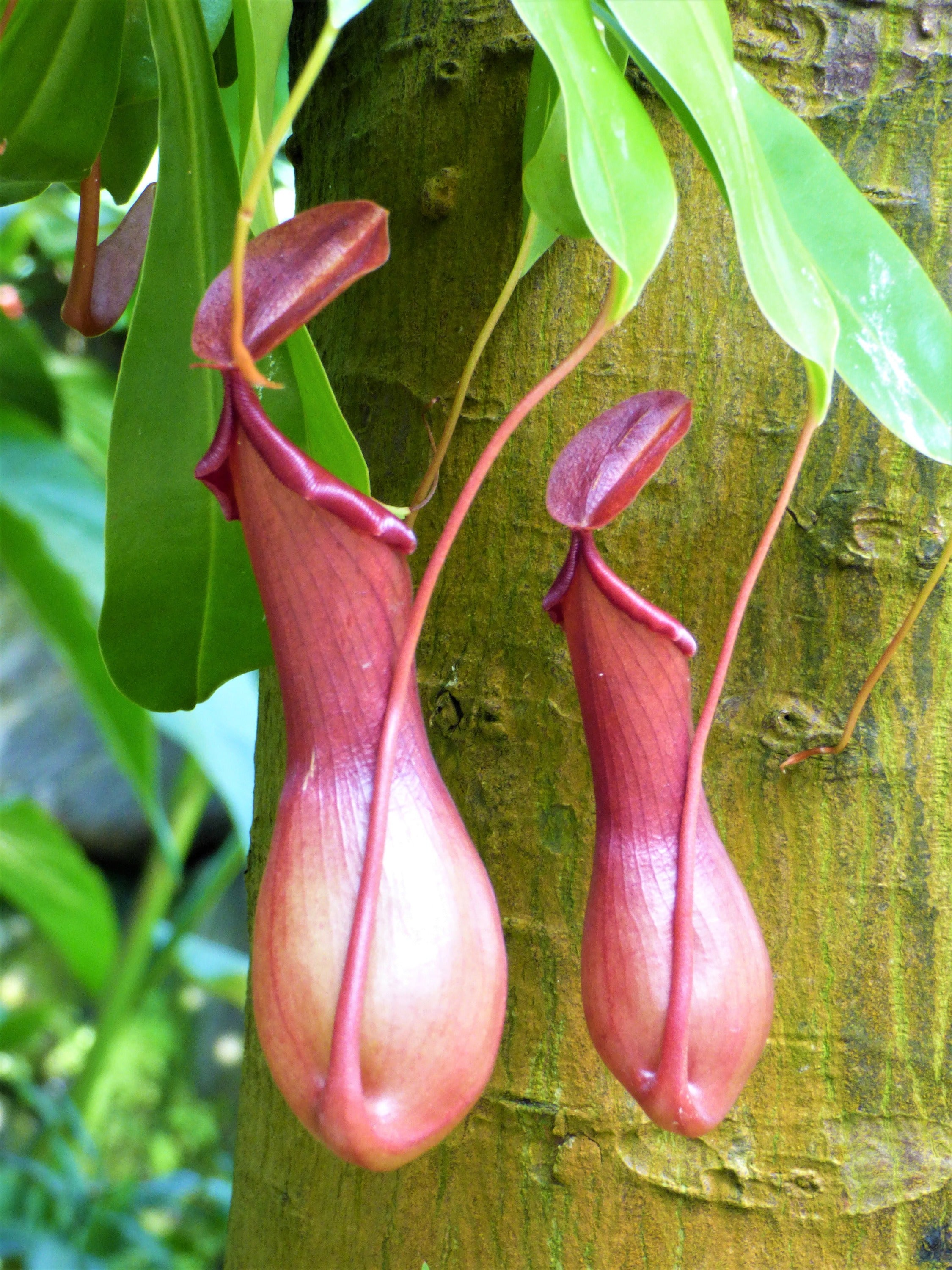So, let’s start with the Venus Fly Trap, which was originally found in the wild in a 60-mile radius of Wilmington, North Carolina, but has since been naturalized in Florida. It was discovered thriving in nitrogen- and phosphorus-deficient coastal bogs, and the first official record of its existence comes from the colonial governor, Arthur Dobbs, who in 1759 named it the Fly Trap Sensitive.
It is that leaf-like trapping mechanism that seems to intrigue us, and a careful examination of an open trap will reveal two hinged trigger hairs on the inside surfaces. The traps only close once the hairs have been triggered twice, after which when stimulated five more times by the entrapped insect, digesting enzymes are produced. The lobes eventually seal up tight, forming a pseudo-stomach that digests the prey and absorbs the nutrients in about ten days, after which there is only an empty shell of the insect prey remaining. In the wild, Venus Fly Traps eat ants, spiders, beetles, and grasshoppers, with less than 5% of its diet composed of flying insects.
At home, you can feed it the common housefly (1-2 a month) although it is a big mistake to allow the kids to trip the traps without prey, as each trap can only close three times before dying and this can starve the plant. While there are many cultivars (with different leaf colours or tooth structure like ‘Sawtooth’) available, this solitary species prefers bright indirect light to full sun during the growing season, but they need a cool window sill to go dormant in the winter and should not be put under grow lights at this time, as this interrupts the natural life cycle. Water with rain or distilled water only.

Drosera rotundifolia
Sundews are the next most common carnivorous plant with just under 200 species worldwide, both tropical and hardy. While we have native species here (Drosera rotundifolia) which is easily seen on the western banks of Whonnock Lake, the one you are most likely to encounter at the store is Drosera capensis or Cape Sundew. This species is from South Africa and bears strap-like leaves covered with reddish sticky tentacles (‘Alba’ has white tentacles and flowers). Once an insect is trapped in the sticky secretion, the leaf curls inward (bringing more digestive glands to the prey) and in about an hour, completely rolls around the trapped insect. When that leaf has removed all possible nutrients, it unfurls to reveal the empty hull of a bug. The Cape Sundew is evergreen and is grown as an indoor houseplant kept evenly moist at all times (use a tray, rain, or distilled water only) with very bright light. You can expect lovely pink flowers on an arched stalk and be sure to keep them in the kitchen when those pesky fruit flies are about.
Pitcher Plants or Sarracenia are the most colourful of carnivorous plants, often with fantastically mottled pitcher tubes and large prominent flowers held on tall stalks. There are about eleven species (as well as numerous hybrids) all native to eastern and central North America and despite appearances are hardy from USDA zones 5-8. They must be grown as outdoor plants, preferably in large containers that can be somewhat sheltered during below-freezing winter temperatures. Use a 50% peat moss / 50% perlite potting mix and try to slightly mound them in the container, as they prefer wet roots but a dry plant base. They combine beautifully with other aquatic marginals such as Spiral Rush (Juncus effusus ‘Spiralis’) or Japanese Horsetail (Equisetum japonicum).
Their means of insect entrapment begins with nectar secretions and the colourful pitcher tubes which lure them in, landing on the waxy pitcher tube rim (peristome) which is slippery. Once they fall into the tube, the insects are confronted with downward-facing hairs and any movement takes them into the water and enzyme-filled lower pitcher tube, where they are digested. Pitcher plant tubes generally last for two years, after which they wither and are replaced with new ones, but if you cut a fading tube open lengthwise you can actually see all the insects it has consumed over that time. Several species are readily available, including S. flava (Yellow Pitcher), S. purpurea (Purple Pitcher), S. rubra (Sweet Pitcher), S. psittacina (Parrot Pitcher), S. leucophylla (White Pitcher) and Sarracenia rosea, as well as numerous hybrids.

Last but not least on our list of common carnivorous plants is Nepenthes or Tropical Pitcher Plant which is often grown as a hanging basket. The reason for this is that the small pitchers are borne on pendulous tendrils at the end of modified leaves, so they tend to dangle downwards much the same way they do in nature when they climb. They prefer bright indirect light (too much sun will cause scorching), high humidity (which is important for pitcher production), and even soil moisture with rain or distilled water, but be sure to water overhead instead of just filling a saucer. As with Sarracenia, Nepenthes produces a nectar that draws insects to the pitchers and once they fall in, the digestive juices extract the nutrients they need. If there are not a lot of insects around, you can use fresh or dried crickets from the pet store to feed them.


